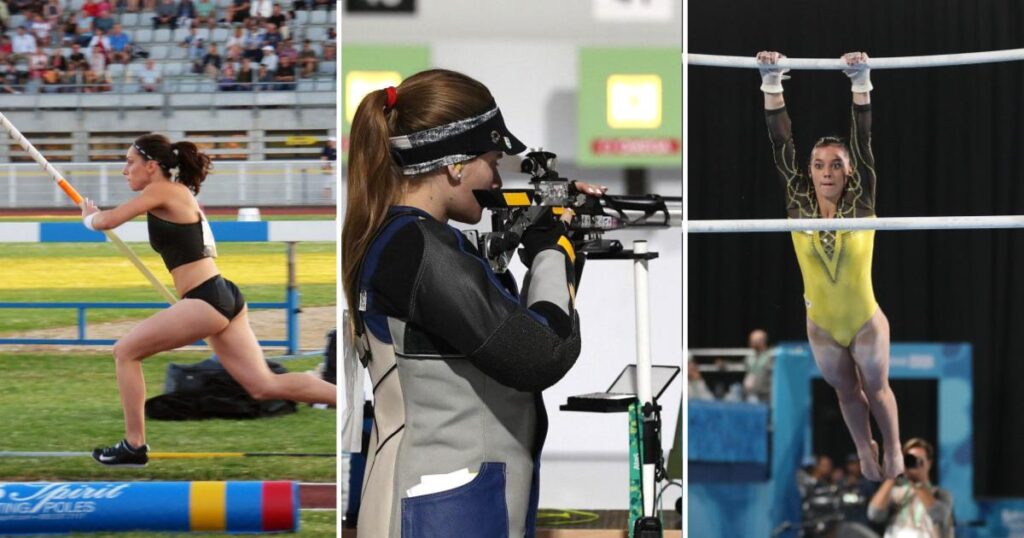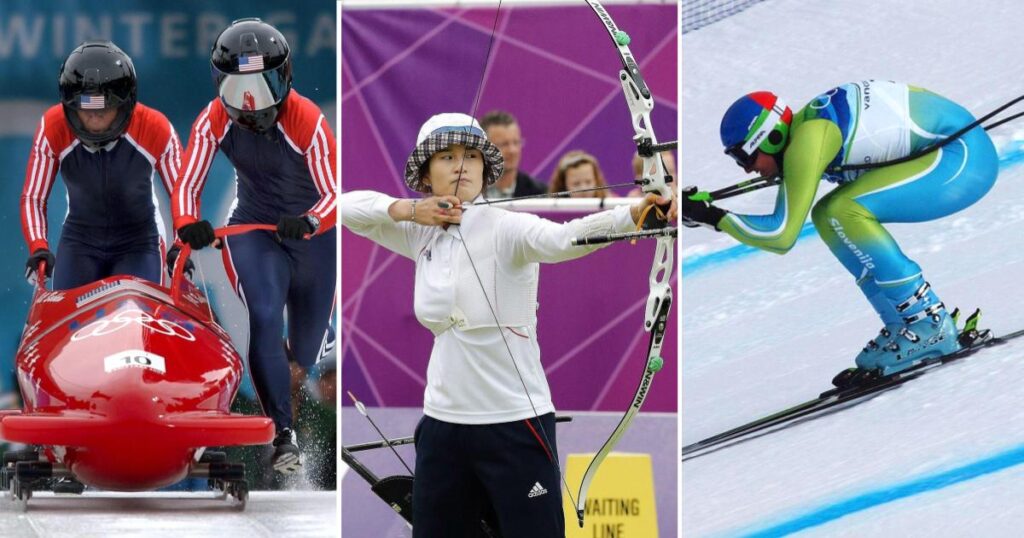There was a time when women were not even allowed to be spectators at the Olympic Games, let alone participate. Of course, this was in ancient times. Back then, women had to struggle for many things, and participating in sports was not considered normal or acceptable due to poor social norms.
Today, things are different. Female athletes are not only competing with men, but there are also sports where they are emerging as winners and doing better than male athletes. In the Tokyo Olympics 2021, 49% of the participating athletes were women. But it has taken so many years for such a development in female sports, and sometimes some of these developments in the world of women’s sports make us think, “Are we still there yet?” For instance, Women’s weightlifting and wrestling competitions were first introduced in the Olympics in 2000 and 2004, respectively. It took more than 100 years for these prominent sports to be included in the modern Summer Olympics, and there is still a huge disparity in female representation in major sporting events.
It has taken female sports a substantial period of time to establish its presence in a world of sports predominantly dominated by men. There is still a lot of work to be done, but the revolution of female athleticism has already begun.
In this post, we will see professional sports where both men and women participate, but it is women athletes who emerge as the winners. It is important to note here that in this post, we are not comparing men and women athletes merely on the basis of some statistical records and medal counts. Comparing the two directly is the wrong way to measure performance. The real measure of female athletes’ dominance in the following sports is the impact they have created over the years, rather than records or medal tally.
1. Long-distance (Marathon) swimming

Marathon swimming is a type of open water swimming competition with a distance of 10 kilometers (6.21 miles) at the Olympic Games. Over the years, female athletes have prevailed over their male counterparts in long-distance swimming. Female athletes hold several world records to their name in long-distance swimming in major marathon swims. When we talk about long-distance swimming, the important aspect is time, which is also a factor that decides the winner.
It has been observed that Female athletes generally take less time to cover the same distance as men. In 1912, women participated in swimming competitions for the first time at the Summer Olympics. In the 1912 Olympics, Australian swimmer Fanny Durack became the first female athlete to win a gold medal in swimming. Not only that, she won all the major swimming events from 1912 to 1918, including freestyle sprints and marathon swimming competitions.
In modern times, one female athlete who has done remarkable work in long-distance swimming is American swimmer Penny Lee Dean. Dean was born in 1955 in the city of San Francisco. At the age of 10, she swam across San Francisco Bay, and that was the start of an illustrious career. She holds the world record for the fastest swim across the English Channel, which she set in 1978 in a record-breaking time of 7:40.
Why do female athletes outperform male athletes in long-distance swimming?
It has been studied that women are better at fat burning when it specifically comes to marathon swimming. Because women naturally have a higher fat percentage than men, their tendency to float in water will always be better than men’s. One more factor that favors female athletes is their higher body temperature, which gives them an extra cushion or, we could say, extra energy to survive in cold water. This is because they save energy compared to men, who utilize more energy on swimming.
Gymnastics: A playground for women athletes
It’s no secret that women athletes have prevailed on all major fronts in gymnastics at the Olympics and in other major sporting events. In the Tokyo 2020 Olympics, American female athletes finished with 66 medals, thanks to their outstanding performance in gymnastics. The overall medal count for the US was 113. That clearly shows how women led the US team in the Olympic Games. If we go back a little and look at their performances in the 2012 and 2016 Olympics, then there as well, American female athletes were leading the US team with an overall medal count of 61 and 58, respectively. Against this, the tally of overall medals for men was 55 in both the 2012 and 2016 Olympics.

When it comes to gymnastics, the female athlete who laid the foundation for future generations was Olga Korbut. Born in 1955, Korbut won several gold medals at the Summer Olympics in 1972 and 1976. She made a huge impact in artistic gymnastics from a very young age, motivating other young female athletes to take up the sport.

One name we cannot miss when talking about this amazing sport is Nadia Comaneci. Comaneci, a retired Romanian gymnast, was the first female athlete to score a perfect 10 at the Olympic Games. She is also a five-time Olympic gold medalist.
Below, we will see examples of some gymnastics sports in which women athletes have stamped their authority.
2. Artistic gymnastics

Until 1934, the Artistic Gymnastics Championships were only open to male athletes. The following are the types of women’s artistic gymnastics, which consists of four events:
- Vault is a difficult skill to perform, as it requires speed and athleticism at the highest level. In the past, athletes have been injured while performing vault due to the very nature of the sport. Due to this very reason, vaulting apparatus has undergone several changes in recent decades, making it safer for athletes and enhancing their performance as well.
- The Uneven bars test an athlete’s agility, making them more suitable for women. Gymnasts must maintain a certain rhythm or pace to keep good form while performing various swings and transitioning from one bar to another. During its evolution the distance between the two bars has increased as athletes have developed complex transitions and this resulted in increased difficulty.

Sandro Halank, CC BY-SA 4.0, via Wikimedia Commons - Balance beam: If the pommel horse is considered the hardest male gymnastics event in the Olympics, then the balance beam is the equivalent for female gymnasts. The idea of performing complex acrobatic movements on a narrow beam while maintaining one’s balance sounds extremely difficult. But female gymnasts, with years of practice and hard work, manage to do it with so much fluidity that watching the balancing beam event becomes an extraordinary experience for spectators.
- Floor exercise: This gymnastics event is performed by both men and women. There are 14 different floor moves, which are performed on a 12-meter square floor. Some of the exercises performed in the floor exercise are the back and front handspring, the front and back walkover, the somersault, the cartwheel, and the cross handstand.
Below, we look at some female-dominant sports other than gymnastics.
3. The Air Rifle & Shooting

The 10-meter air rifle is one of the few Olympic sports where women athletes “outpace” men. Air rifle shooting is not limited to the Olympics, as throughout the year, many major shooting events are organized by the International Shooting Sports Federation (ISSF), the official body that governs various shooting sports.
Though there is no noteworthy performance gap between women and men athletes in most countries in air rifle shooting competitions, in some countries, such as Asian countries such as China and India, and European countries like Great Britain and Hungary, women do outperform men.

Mixed team 10 meter air rifle is a great sign that shows us that this sport has achieved much-needed gender equality, which is lacking in some other sports. In the Tokyo 2020 Olympics, a mixed team 10 meter air pistol shooting event was added to promote and provide more opportunities for female Olympians.
In general, female shooters lead from the front in the Olympic Games. In the 2016 Summer Olympics, Team USA shooting won three gold medals, all by female shooters. One of those medals was won by Kim Rhode, a shotgun skeet shooter. With this performance, she became the first athlete to win six consecutive medals in the Summer Olympics. No other athlete, woman or man, has ever achieved this amazing feat in Olympic history.
4. Ultra-marathon racing

Over the years, female ultramarathon runners have not only improved their stats, but also the sheer number of women participating in ultramarathons has increased immensely. According to various studies, female athletes outperform male athletes in marathons, which consist of distances longer than 195 miles.
Ultramarathons also provide a unique opportunity for women and men to compete side by side, allowing their performance to be evaluated without ambiguity. As the numbers suggest, women tend to perform better than men in longer-distance marathons. Ultramarathons test you on all levels, from endurance to resilience. The runner with the better focus will cross the finish line first.
Courtney Dauwalter, an American ultramarathon runner, won the 238-mile race in 58 hours with only 21 minutes of sleep. Ann Trason of California is probably the most successful ultramarathon runner, having set as many as 20 world records during her career. She has won the Western States Endurance Run 14 times.
5. Volleyball

When a sport is more about technique than strength, expect female athletes to excel in that sport! Volleyball is one such sport that perfectly fits the above criteria. The stats for US volleyball players suggest the same. Over 78% of American volleyball players are female. Traditionally, volleyball has been dominated by men in the US. But in recent years, there has been a rapid surge in the number of female volleyball players.
It’s not just about numbers, but also about skill level. Women athletes not only matched up with men, but they also exceeded expectations. Women volleyball players are looked upon as ambassadors of the game. Misty May-Treanor, Sheilla Castro, and Kerri Walsh Jennings are some women who have made their mark on this sport.
The surge of female athletes in volleyball has led to the creation of mixed volleyball teams, where men and women play on the same team. Schools, universities, and leagues all over the world have implemented this format, and the trend is more popular than ever.
6. Pole vault

Pole vault is a track and field event and part of the Summer Olympic Games. In this sport, an athlete attempts to vault over a high bar with the help of a highly flexible long pole. Unlike the other sports mentioned above, pole vault has separate sets of rules and regulations for men and women with regard to various parameters and specifications of the game.
The rules related to various aspects of the sport, such as the height and length of the bar, the length of the pole, and the run-up distance, differ for women athletes than men. Of course, all these differences in various parameters are made with consideration for the differences in the physical stature of male and female athletes, such as height and upper body strength. All these aspects play a role when we analyze the performances of male and female pole vaulters from the same common lens.

The current world record for pole vault in the men’s category is held by Swedish vaulter Armand Duplantis with a vault of 6.22 m. The women’s world record was set in 2009 by Russian athlete Yelena Isinbayeva with a vault of 5.06 m.
Men’s pole vaulting has been part of the Olympic Games since the modern Olympics began in 1896. Women’s pole vaulting was added in 2000, and American pole vaulter Stacy Dragila became the first female Olympic pole vault champion. The time it has taken for women’s pole vaulting to become an Olympic event is substantial, but even after such a long wait, women have done exceptionally well in the Summer Olympics. At the 2020 Tokyo Olympics, over 31 women competed in pole vault. These facts and figures are quite impressive for women’s pole vaulters, considering all the factors mentioned above.
7. Roller derby

Roller derby is a contact sport played on an oval-shaped track suitable for roller skates. It consists of two teams of five members each. The sport is widely played in the United States and has more than 1,000 leagues worldwide, mostly dominated by female athletes.
Roller derby is a challenging sport that involves physical contact, as well as elements of blocking and tackling. However, the athletes wear all the required safety gear to protect themselves from potential injury. WFTDA is a governing body that establishes the rules and regulations for the sport of roller derby for female athletes. There is also a similar governing body for men’s and junior-level competitions.
The sport gained popularity mostly for its entertainment value during the 1940s and the period after that. Gradually, as the sport gained a regulating body, many people, both men and women, began playing it at the amateur level, and it also gained recognition in other countries. Over the past few decades, the sport has started to revive, and is now no longer viewed as merely a means of entertainment. It was considered for official inclusion in the 2020 Tokyo Olympics.
Women athletes played a crucial role in reviving the sport of roller derby. The sport has been played by both men and women, as its nature is such that there is something for everyone. However, women’s dominance in roller derby has increased significantly over time. Today, men do participate in roller derby competitions organized by its governing body in different parts of the world.
Commendably, even though the sport is a contact sport in which men have always been frontrunners, and was further evolved by two men (Leo Seltzer and Damon Runyon, fellow Americans) during the 1930s, it has been taken over by women, as there was a phase when the sport struggled for survival.
8. Artistic (Synchronized) swimming
Arguably, Artistic Swimming is one of the most complex water sports in terms of execution. Though both men and women participate, men’s representation and the recognition they receive in this sport are not on par with those of women athletes. At the Olympics, this event has primarily been contested by female athletes, especially in the team category. While male athletes do participate in artistic swimming competitions, they haven’t yet competed at the Olympic level. The 2024 Olympics will be marked as the first time men will compete in the artistic swimming team event.
Synchronized swimming is a sport where two different disciplines, gymnastics and swimming, come together. The addition of dance and synchronized movements raises the overall difficulty of this sport. The sporting event truly tests teamwork and coordination among members. It requires a certain level of agility and artistic ability, which makes it popular among women.
Women’s participation in sports has increased tremendously over time and will continue to grow in the future. There were certain sports in which men outnumbered women, but this did not stop women athletes from competing alongside their male counterparts. And the results are there for us to see. Today, many sports such as tennis, soccer, and basketball, which were predominantly dominated by men, are now equally participated in by female athletes. There are many female sports icons that young girls look up to and dream of achieving what they have achieved in their lifetime. And as we know, if one dreams, one can dominate!






